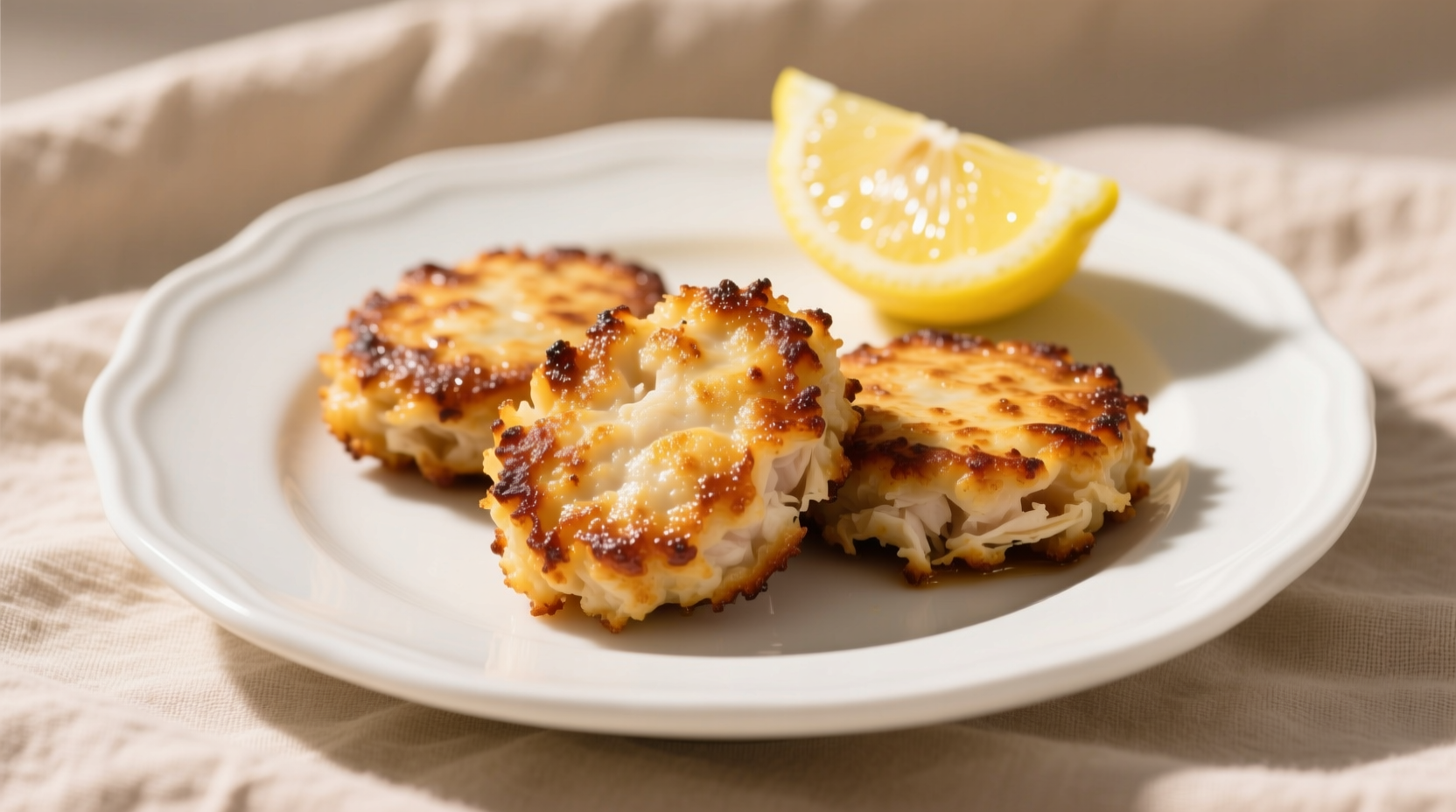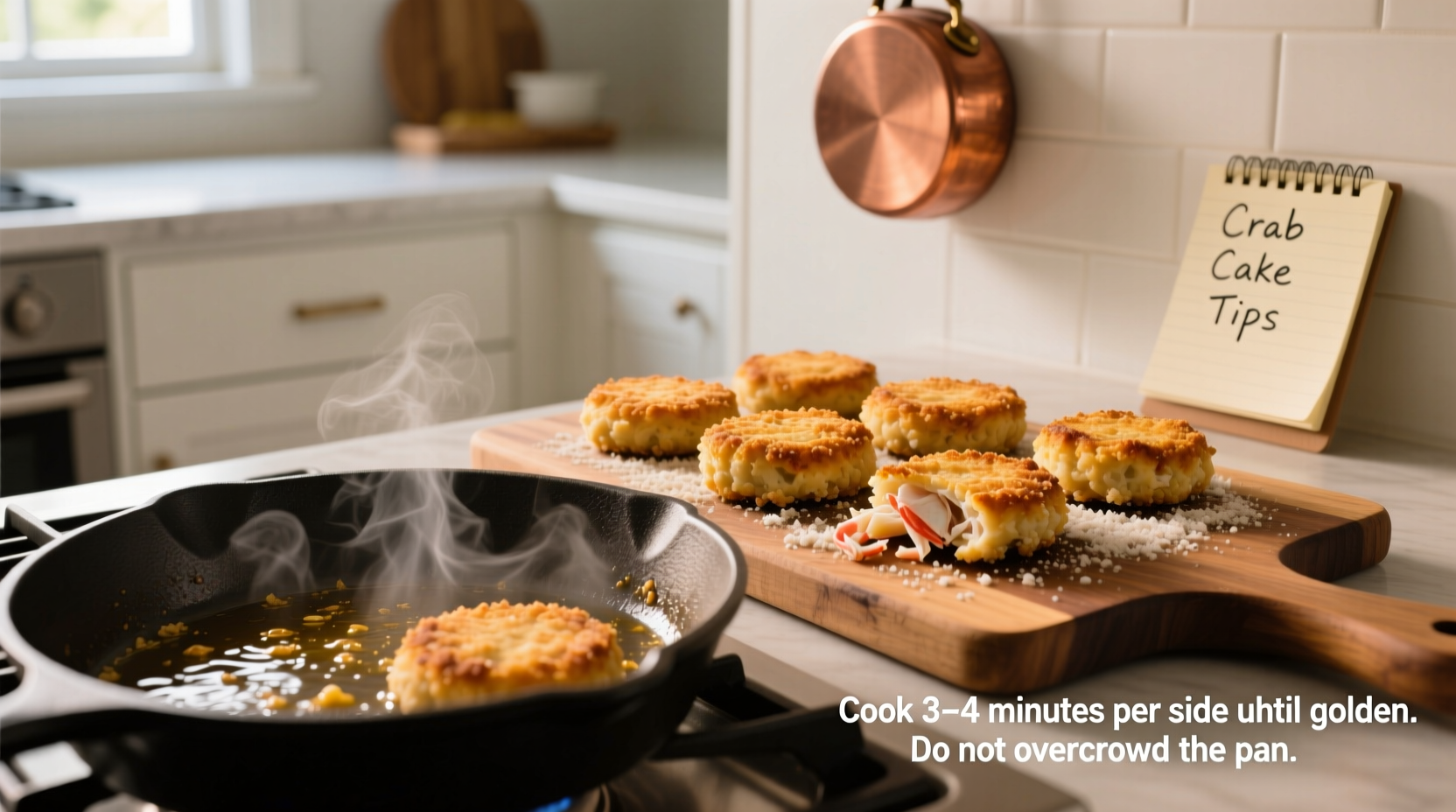Here's the direct answer: You can cook frozen crab cakes without thawing them first. For best results, bake at 400°F (204°C) for 18-22 minutes, pan-fry over medium heat for 8-10 minutes per side, or air fry at 375°F (190°C) for 12-15 minutes. Always cook until they reach an internal temperature of 145°F (63°C) and have a golden-brown exterior.
The Ultimate Guide to Cooking Frozen Crab Cakes Perfectly
Nothing beats the convenience of having frozen crab cakes in your freezer for a quick seafood meal. But many home cooks make critical mistakes that lead to soggy, broken, or undercooked results. As a chef who's prepared thousands of crab cakes in professional kitchens, I've perfected the methods that guarantee restaurant-quality results every time—no thawing required.
Why You Shouldn't Thaw Frozen Crab Cakes First
Contrary to popular belief, thawing frozen crab cakes before cooking actually compromises their texture. When crab cakes thaw, moisture seeps out, making the exterior soggy and causing them to fall apart during cooking. The USDA Food Safety and Inspection Service confirms that many frozen seafood products can be cooked directly from frozen without compromising safety or quality.
| Cooking Method | Temperature | Time | Best For |
|---|---|---|---|
| Oven baking | 400°F (204°C) | 18-22 minutes | Multiple crab cakes, hands-off cooking |
| Stovetop frying | Medium heat | 8-10 min per side | Crispy exterior, small batches |
| Air frying | 375°F (190°C) | 12-15 minutes | Quick cooking, oil-free option |
Three Foolproof Methods for Cooking Frozen Crab Cakes
Oven Method: Best for Multiple Crab Cakes
This method delivers evenly cooked crab cakes with minimal hands-on time—perfect when cooking for a crowd.
- Preheat your oven to 400°F (204°C)
- Line a baking sheet with parchment paper or lightly grease it
- Arrange frozen crab cakes in a single layer with space between them
- Lightly spray or brush with oil (this creates a crispier exterior)
- Bake for 18-22 minutes, flipping halfway through
- Check internal temperature reaches 145°F (63°C)
Pro tip: For extra crispiness, place a wire rack on your baking sheet before adding the crab cakes. This allows hot air to circulate completely around each cake.
Stovetop Method: Best for Crispy Texture
If you prefer that restaurant-style crispy exterior, pan-frying delivers superior results for small batches.
- Heat 2-3 tablespoons of oil (canola or avocado work best) in a skillet over medium heat
- Place frozen crab cakes in the pan without crowding
- Cook for 4-5 minutes until golden brown
- Carefully flip and cook another 4-5 minutes
- Reduce heat if browning too quickly
- Check internal temperature reaches 145°F (63°C)
Critical mistake to avoid: Don't move the crab cakes too soon after placing them in the pan. Let them develop a crust (about 2 minutes) before attempting to flip, otherwise they'll stick and break apart.
Air Fryer Method: Best for Quick, Oil-Free Cooking
The air fryer delivers excellent results with less oil and faster cooking times than traditional methods.
- Preheat air fryer to 375°F (190°C)
- Arrange frozen crab cakes in a single layer in the basket
- Spray lightly with cooking oil
- Cook for 12-15 minutes, flipping halfway through
- Check internal temperature reaches 145°F (63°C)
According to the National Fisheries Institute, seafood should always reach an internal temperature of 145°F to ensure food safety. This is non-negotiable for crab cakes, which contain seafood that must be properly cooked.

Avoid These 3 Common Crab Cake Cooking Mistakes
Mistake #1: Overcrowding the Pan or Baking Sheet
When crab cakes are too close together, steam gets trapped, preventing proper browning and causing soggy exteriors. Always leave at least 1 inch of space between each cake.
Mistake #2: Using Too High Heat
Many home cooks crank up the heat to "get a good sear," but this burns the exterior while leaving the center frozen. Medium heat ensures even cooking throughout.
Mistake #3: Not Checking Internal Temperature
Color alone isn't a reliable indicator. Your crab cakes might look done on the outside but remain frozen inside. Always use an instant-read thermometer to verify they've reached 145°F (63°C).
Serving Suggestions That Elevate Your Crab Cakes
Perfectly cooked crab cakes deserve equally impressive accompaniments. Try these professional pairing ideas:
- Lemon-dill aioli: Mix 1/2 cup mayonnaise, 1 tbsp lemon juice, 1 tsp fresh dill, and a pinch of garlic powder
- Simple salad: Arugula with lemon vinaigrette cuts through the richness
- Classic sides: Roasted asparagus or sweet potato fries complement crab beautifully
- For brunch: Serve with poached eggs and hollandaise for crab cake Benedict
Storage and Reheating Guidelines
If you have leftovers (unlikely with these delicious crab cakes!), proper storage maintains quality:
- Refrigeration: Store in airtight container for up to 3 days
- Reheating: Best reheated in oven at 350°F for 8-10 minutes (avoid microwave)
- Freezing cooked: Place on baking sheet to freeze individually, then transfer to freezer bag for up to 2 months
The FDA Food Code specifies that cooked seafood should be cooled rapidly and refrigerated within 2 hours to prevent bacterial growth. This is especially important for crab cakes which contain perishable seafood.
Final Tips for Perfect Frozen Crab Cakes Every Time
- Don't press down on crab cakes while cooking—they'll lose their shape
- For extra flavor, add a pinch of Old Bay seasoning to your cooking oil
- If using store-bought frozen crab cakes, check ingredients—real crab should be first on the list
- Let crab cakes rest 2-3 minutes after cooking for cleaner slices











 浙公网安备
33010002000092号
浙公网安备
33010002000092号 浙B2-20120091-4
浙B2-20120091-4